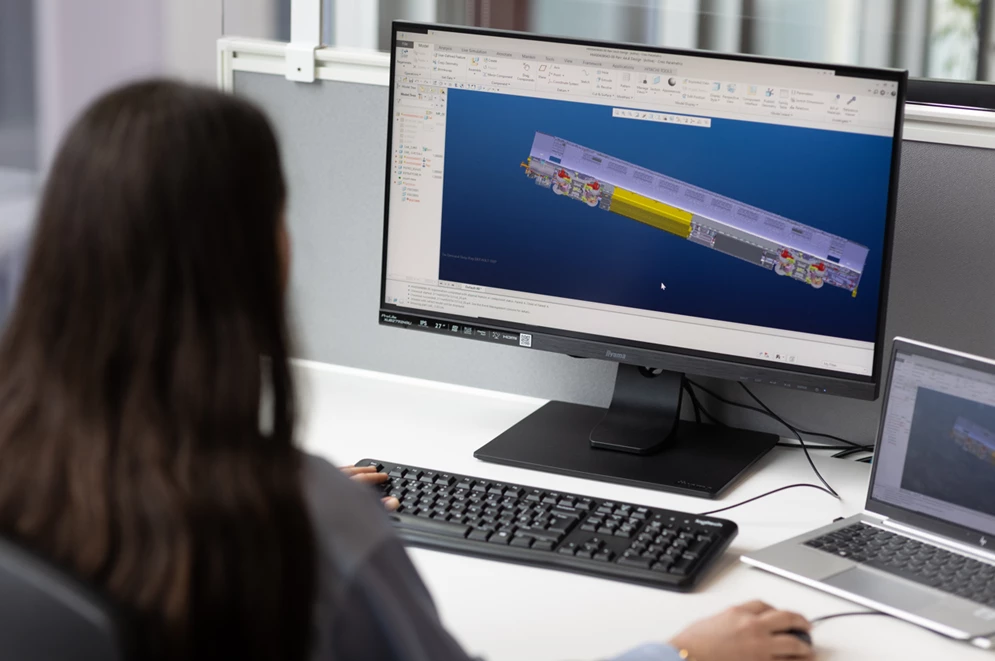Sevinc Bayram leads the Data Science team at our global head office in London. Her role in data contributes to ensuring passenger safety, making train maintenance more efficient and reducing the environmental impact of our technology.
She uses algorithms to predict faults and hinderances before they cause an issue to our trains and their journeys.
Hear from Sevinc as we interview her on her career in data from academic study to the rail industry.
What is the educational background to your career?
I began by studying Electrical Engineering for my undergraduate degree, then pursed a master’s in Digital Image Forensics, where I began to pick up machine learning skills.
This led to a PhD opportunity at New York University, which focused on the Application of Multimedia Forensic Techniques. For which I am proud of my contributions to a study which helped improve children’s safety in the cyberworld.
Can you describe your career journey with Hitachi?
Having made the decision to live in London, I applied for a job as a Research Engineer at Hitachi Europe, it was the turning point of my career! In this role, my daily work involved the analysis of the immense amount of data that is gathered at Hitachi Rail.
After 4 years of working on rail related data, I saw a Lead Data Scientist job opportunity had opened at Hitachi Rail. This was a way of working more closely with the rail projects, by moving into the business.
My data analytics and research background and Hitachi experience helped me migrate to the current role that I have, as a Data Scientist in Hitachi Rail.
Tell us about what you do every day in your current role?
Firstly, I can say that I am passionate about the work that I do, I feel so fortunate to be a part of the rail industry.
My role is centred around Maintenance and Overhaul activities. My team and I focus on predicting failures before they cause a service disruption. To this purpose, we study the data from various rail components – bogies, pantograph, doors, HVAC, etc. There are hundreds of parts, and each system has its own maintenance and overhaul schedule. Historic data helps us understand how to schedule maintenance in the most efficient manner.
We built a condition monitoring tool to help improve safety, reliability, and availability. This tool also reduces waste by ensuring that only the necessary maintenance is carried out.
How did you acquire the skills for this role?
I was given very good induction into rail maintenance by my managers in the business, who ensured that I was able to get a good understanding of the mechanics and business sides to the company technology. Once I had this foundation of knowledge, we started looking at data and were able to identify patterns, trends, and incidents.
See, you can hire a lot of Data Scientists in the rail industry, but they need to understand how train systems and maintenance businesses work, to thrive.

From big data, we are now able to predict incidences and make the whole system more efficient
Now that you lead a team of Data Scientists and Engineers. What do you look for when you hire a new candidate?
I started as the only Data Scientist at the London office. I am now building my team and hire Engineers who understand Data Science rather than Data Scientists themselves. This is because to be able to build a machine learning model, you need to understand how this whole system is working so you can build a better-informed model on it.
As a result, Engineers tend to get results more quickly and know how to target the correct areas. If you don’t understand the system, you can't give the maintainers actionable results.
What is the best part of your job?
It feels great whenever we predict a failure before a train must be stopped in service. It is amazing to know that our algorithms prevent delays to passengers’ journeys.
To give an example, our Artificial Intelligence algorithms have been able to identify a clogged radiator before the power system gets too hot and shuts down.
What is the most exciting project that you are working on right now?
I am working on Reactive Maintenance, Predictive Maintenance and Maintenance Optimisation. We study historic data (there is a lot that gets collected). From big data, we are now able to predict incidences and hence make the whole system more efficient.
I started my career with forensic research to help detectives and catch criminals. Now I am the detective, and the incidences are the culprits that need to be caught before they cause damage!
To find out more about careers at Hitachi Rail, please click here to visit our careers pages.


